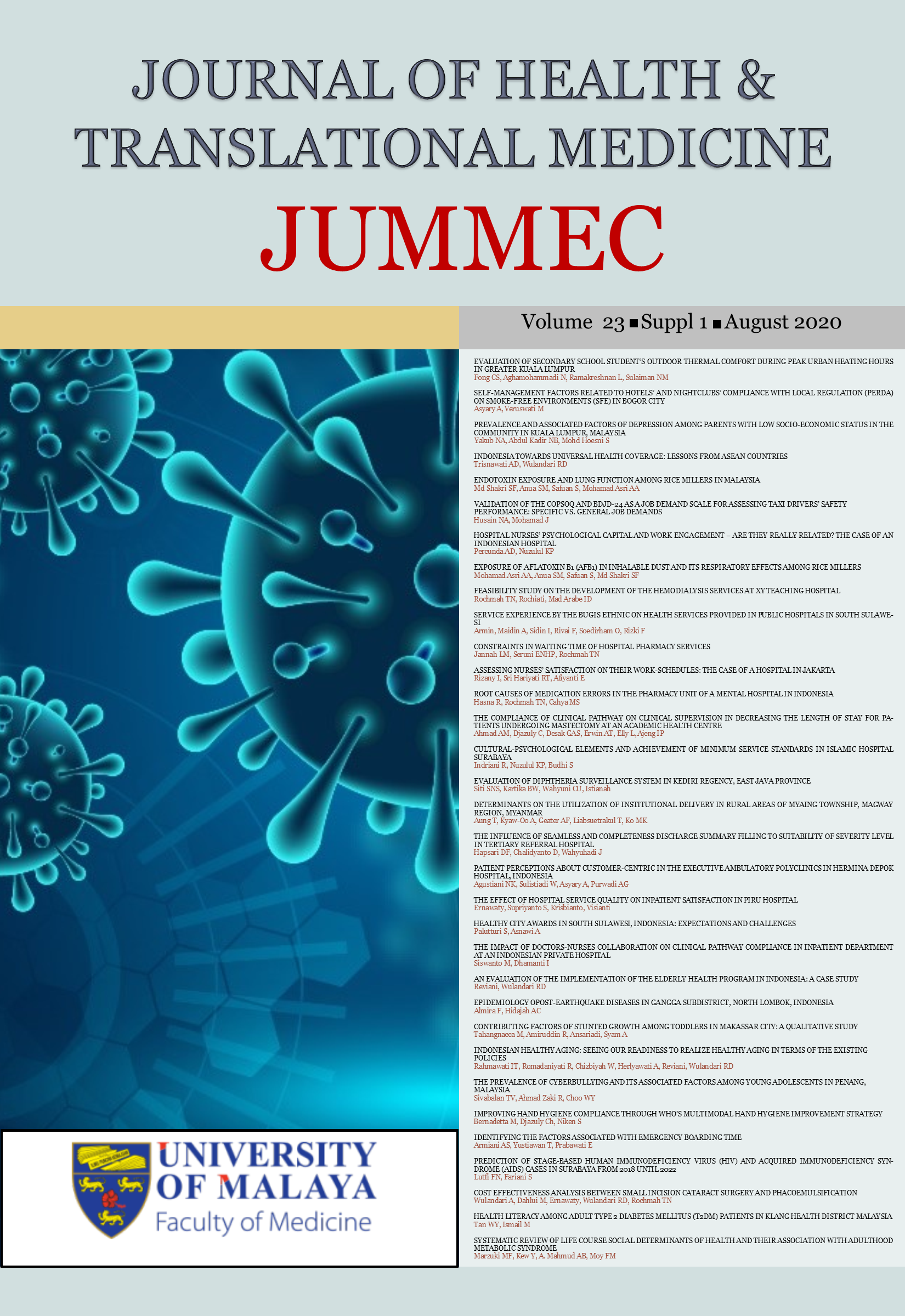CONTRIBUTING FACTORS OF STUNTED GROWTH AMONG TODDLERS IN MAKASSAR CITY: A QUALITATIVE STUDY
Keywords:
Stunted growth, Toddlers, Feeding practices, Infectious diseases, Socio-economic statusAbstract
Introduction: The prevalence of stunted toddlers in Indonesia is close to 9 million. Other than the importance of food intake as the cause of the stunting, types of feeding practices, infections, poor socio-economic status, and low healthcare are also among the contributors. The objective of this study is to describe the feeding practices, the history of the disease and the socio-economic conditions of stunted toddlers in South Sulawesi, in particular, Makassar City.
Materials and Methods: An in-depth interview was conducted with the mothers of 72 toddlers who had been identified as stunted.
Results: It was found that majority of the stunted toddlers (59.7%) had been introduced to complementary foods earlier than it should be. About 70.8% had been infected with acute respiratory infection (ARI), and diarrhoea with majority of the affected toddlers being from the low income socio-economic status.
Conclusion: There are many factors that contribute to the toddlers’ stunted growth, and some possibilities to overcome this are to improve the socio-economic status of the families and for the authorities to introduce health education throughout the community.
Downloads
Downloads
Published
Issue
Section
License
All authors agree that the article, if editorially accepted for publication, shall be licensed under the Creative Commons Attribution License 4.0 to allow others to freely access, copy and use research provided the author is correctly attributed, unless otherwise stated. All articles are available online without charge or other barriers to access. However, anyone wishing to reproduce large quantities of an article (250+) should inform the publisher. Any opinion expressed in the articles are those of the authors and do not reflect that of the University of Malaya, 50603 Kuala Lumpur, Malaysia.


